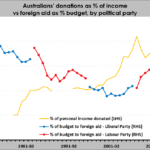By the time the Christmas Holiday Road Toll counter begins, the worst is all but over. For many, unfortunately, the reminders of the roads’ dangers come too late.
Every year the Australian media and Police and Roads Departments produce an hour by hour, day by day counter of the road fatalities occurring during the festive season. News bulletins focus on yet another untimely death, and end of year best wishes are accompanied by a “stay safe on the roads” message.
It has almost become a new Hallmark theme, alongside “It’s a boy”, “Get Well soon”, and “I might not want to personally join such an outdated and discriminative institution, but I respect your right to do so, even if many aren’t yet afforded that right”¹.
Whilst road fatalities are a serious issue deserving of media attention, the Christmas period is not news worthy. In fact, the focus might incorrectly imply that the rest of the year is less dangerous, and therefore less deserving of our vigilance.

Based on figures from 1989-2014 from the Bureau of Infrastructure, Transport and Regional Economics’ (BITRE), the Xmas Toll period (which this year runs from the 23rd December to the 3rd January) has a lower road fatality average than the rest of the year².
The graph above compares each day in December through to mid-January to the average death rate for the entire year. These figures are based on data in the 1989-2014 period, for which the average is 4.7 road fatalities per day. The red areas denote a day where there are more deaths on the road than average, and grey areas denote smaller number of casualties.
Other than a small spike on Boxing and New Year’s Day, the rest of the Xmas Road Toll Period is remarkably below average.
Unlike the Festive period, the weeks just prior to it do seem more dangerous than average. On average, 110 people will die on the roads in the first 3 weeks of December every year. This is more than in any other 3 week continuous period during the year.
Newspapers are not entirely unaware of the numbers. In fact they usually publish an article or two every year showing how misleading these tolls are (example ³). Yet they continue to misguide the community and create panic by perpetuating the myth.
The question is how we focus our educational and advertising campaigns to have the greatest impact. I doubt Christmas is the answer. It rarely is.
__________________________
[1] This comment is source-less, and potentially misleading.
[2] http://bitre.gov.au/statistics/safety/fatal_road_crash_database.aspx
[3] http://www.theage.com.au/victoria/victorians-need-to-stop-talking-about-the-road-toll-tac-chief-says-20151223-glu3c8.html

















